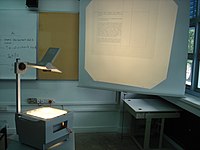
Photo from wikipedia
Organic light emitting diode (OLED) display panels are becoming increasingly popular especially in mobile devices; one of the key characteristics of these panels is that their power consumption strongly depends… Click to show full abstract
Organic light emitting diode (OLED) display panels are becoming increasingly popular especially in mobile devices; one of the key characteristics of these panels is that their power consumption strongly depends on the displayed image. In this paper, we propose low-overhead adaptive power saving and contrast enhancement (LAPSE), a new methodology to concurrently reduce the energy consumed by an OLED display and enhance the contrast of the displayed image that relies on image-specific pixel-by-pixel transformations. Unlike previous approaches, LAPSE focuses specifically on reducing the overheads required to implement the transformation at runtime. To this end, we propose a transformation that can be executed in real time, either in software, with low time overhead, or in a hardware accelerator with a small area and low energy budget. Despite the significant reduction in complexity, we obtain comparable results to those achieved with more complex approaches in terms of power saving and image quality. Moreover, our method allows to easily explore the full quality-versus-power tradeoff by acting on a few basic parameters; thus, it enables the runtime selection among multiple display quality settings, according to the status of the system.
Journal Title: IEEE Transactions on Image Processing
Year Published: 2018
Link to full text (if available)
Share on Social Media: Sign Up to like & get
recommendations!